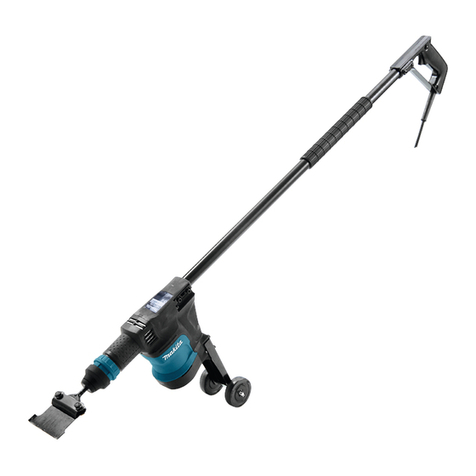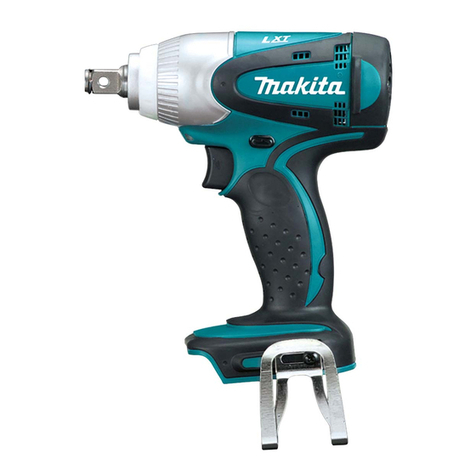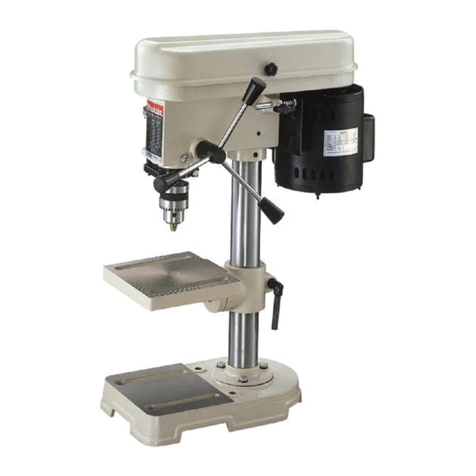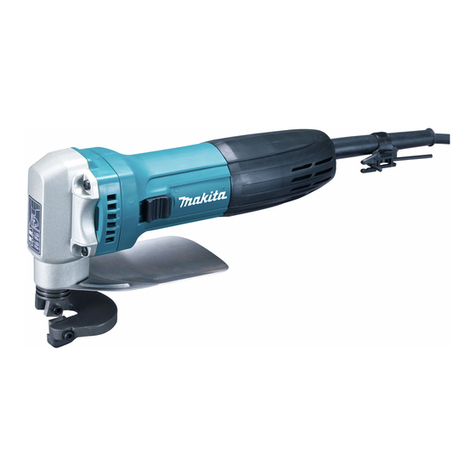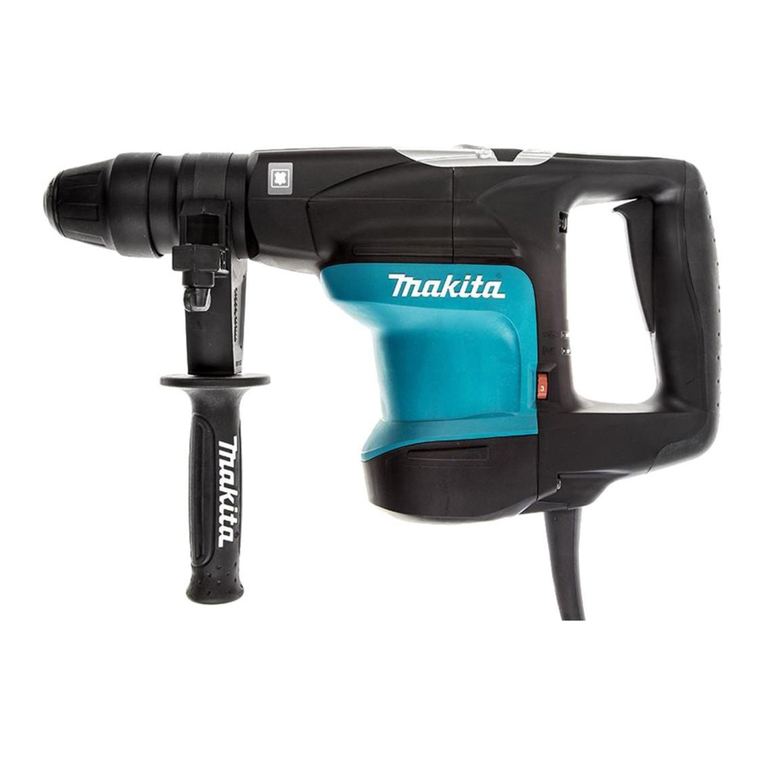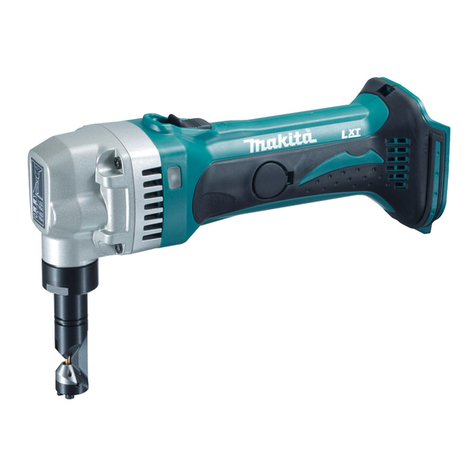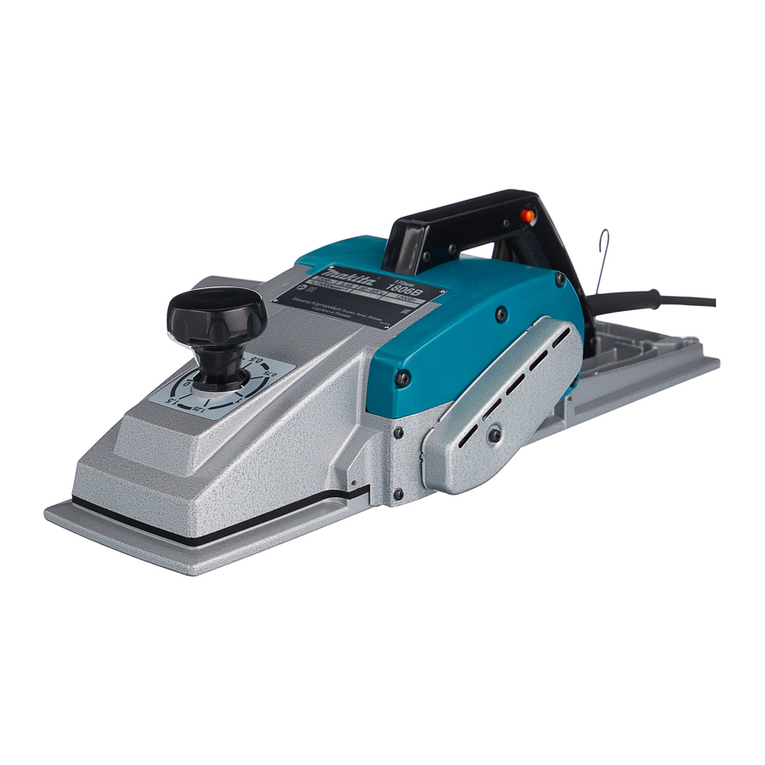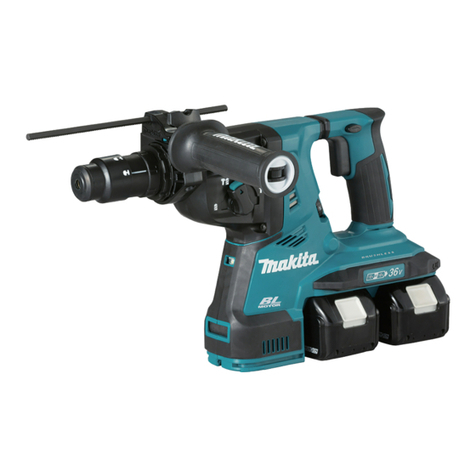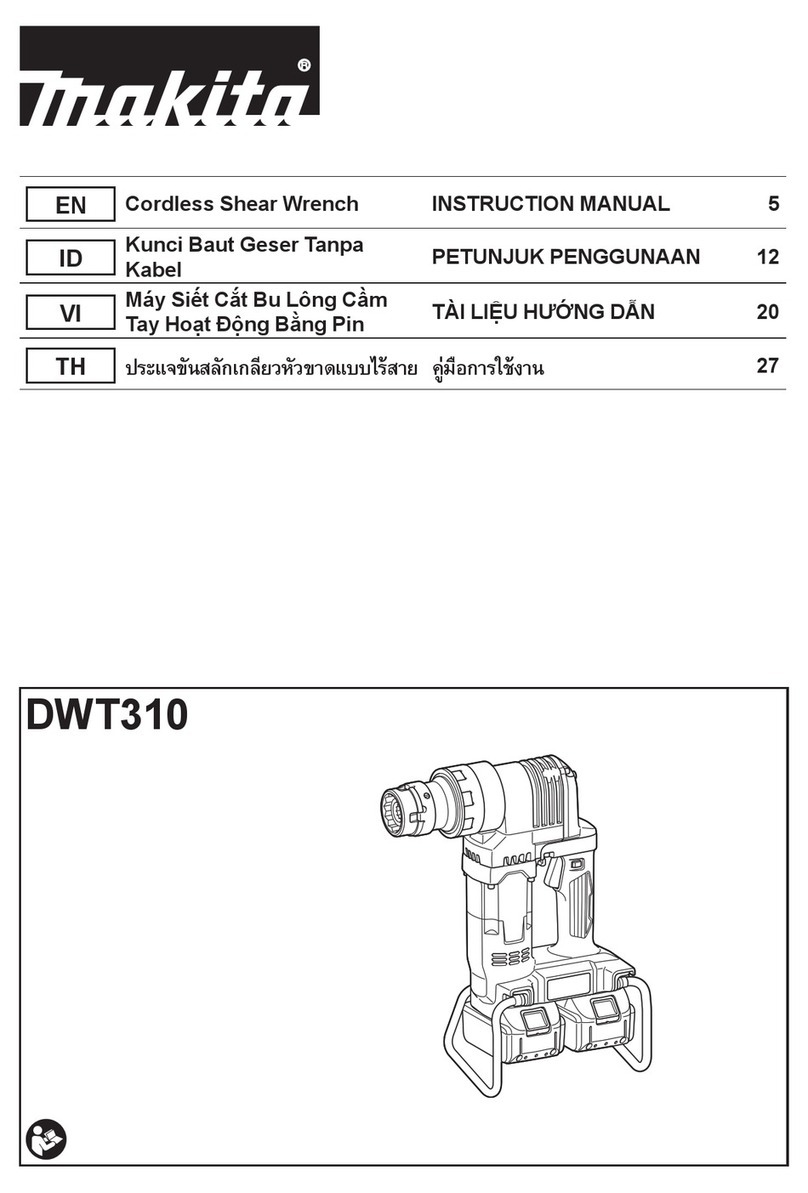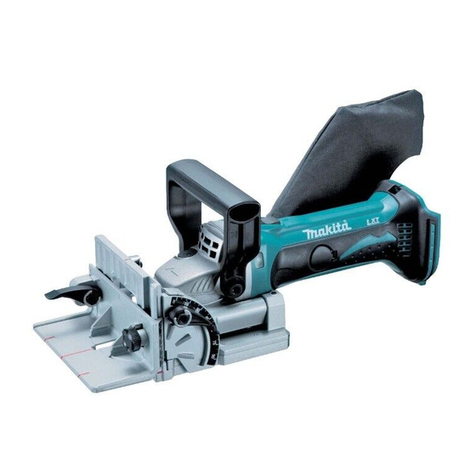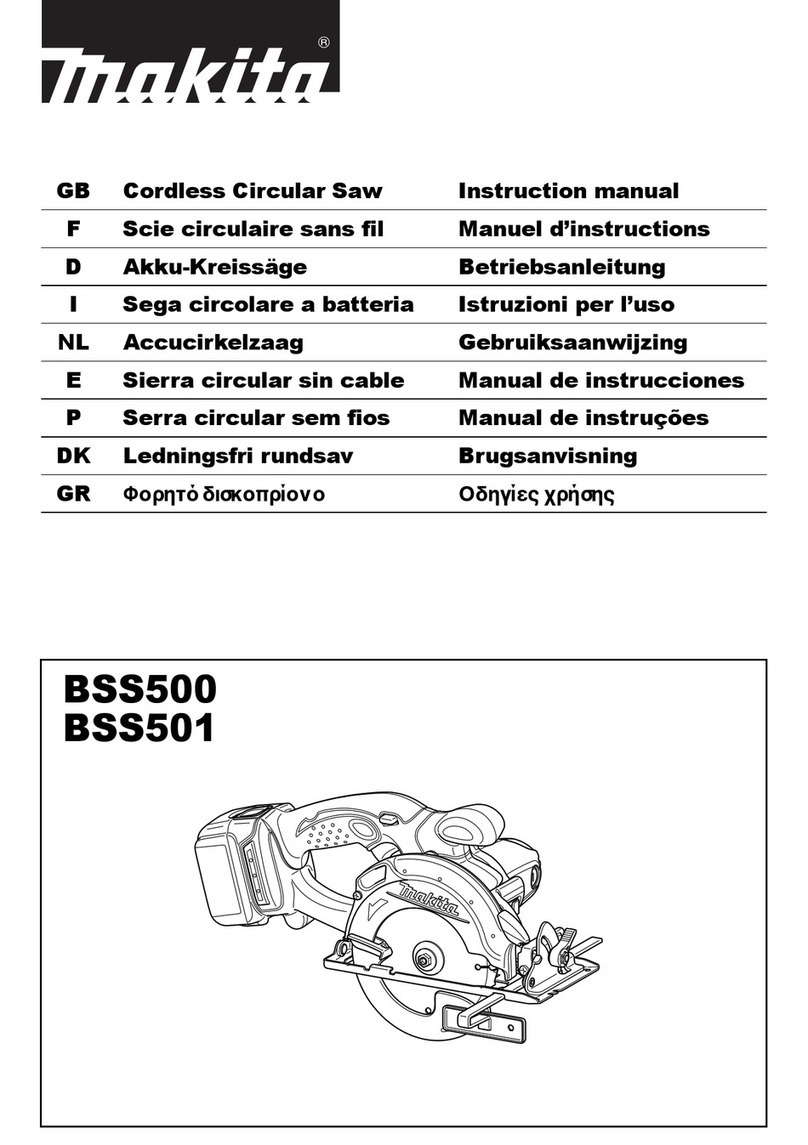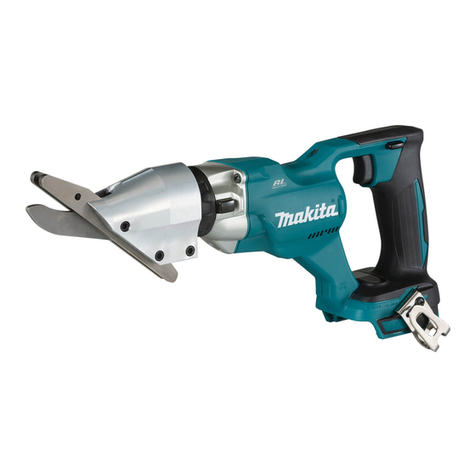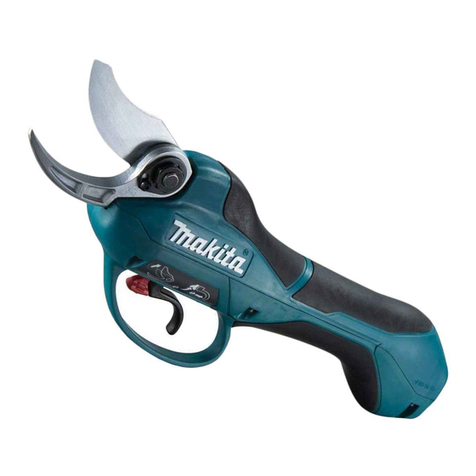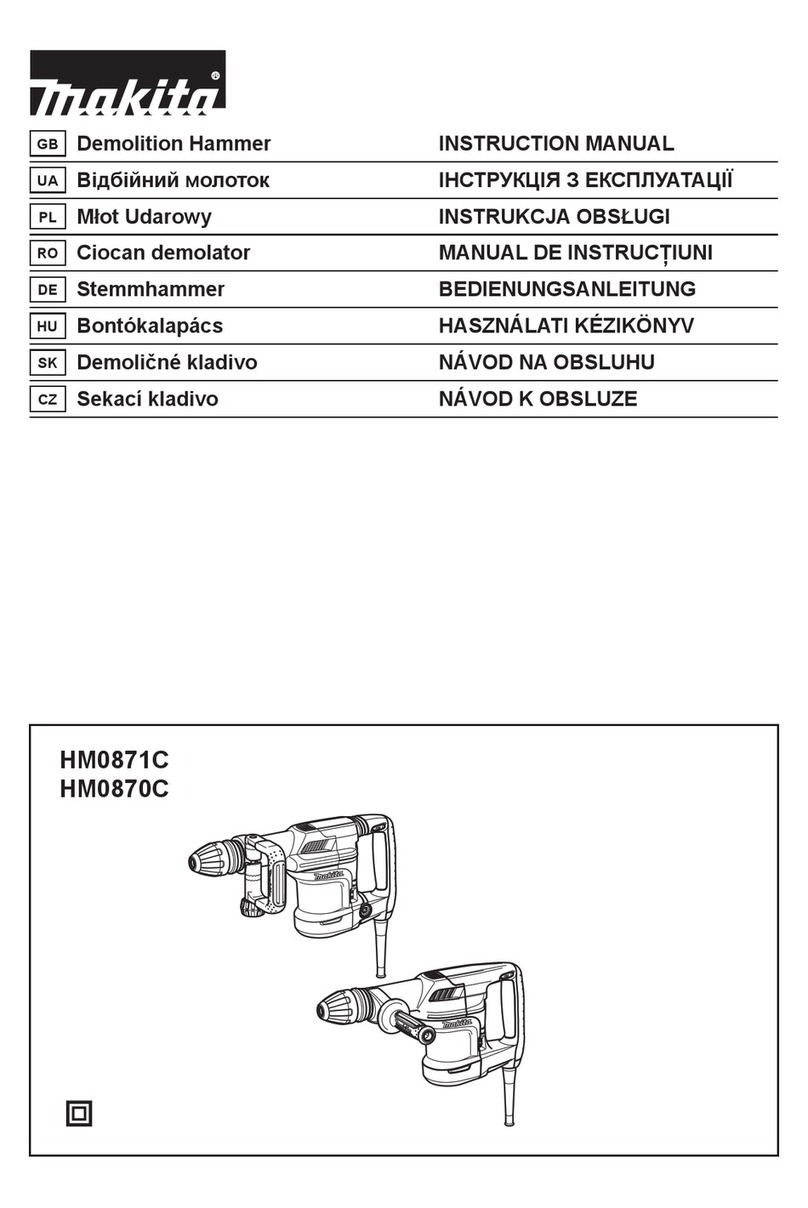
10 ENGLISH
Main power switch
WARNING: Always turn off the main power
switch when not in use.
Tostandbythetool,pressthemainpowerbuttonuntil
themainpowerlamplightsup.Toturnoff,pressthe
mainpowerbuttonagain.
►Fig.4: 1.Mainpowerbutton
NOTE:Themainpowerlampbrinksiftheswitch
triggerispulledunderunoperatableconditions.The
lampblinksifyouturnonthemainpowerswitchwhile
holdingdownthelock-offleverandtheswitchtrigger
NOTE:Thistoolemploystheautopower-offfunction.
Toavoidunintentionalstartup,themainpowerswitch
willautomaticallyshutdownwhentheswitchtrigger
isnotpulledforacertainperiodafterthemainpower
switch is turned on.
Switch action
WARNING: For your safety, this tool is
equipped with lock-off lever which prevents the
tool from unintended starting. NEVER use the tool
if it runs when you simply pull the switch trigger
without pressing the lock-off lever. Return the
tool to our authorized service center for proper
repairs BEFORE further usage.
WARNING: NEVER tape down or defeat pur-
pose and function of lock-off lever.
CAUTION: Before installing the battery car-
tridge into the tool, always check to see that the
switch trigger actuates properly and returns to
the "OFF" position when released.
NOTICE: Do not pull the switch trigger hard with-
out pressing the lock-off lever. This can cause
switch breakage.
Topreventtheswitchtriggerfrombeingaccidentally
pulled,alock-offleverisprovided.
►Fig.5: 1.Lock-offlever2.Switchtrigger
Tostartthetool,turnonthemainpowerswitchand
graspthehandle(thelock-offleverisreleasedbythe
grasp)andthenpulltheswitchtrigger.Toolspeedis
increasedbyincreasingthepressureontheswitch
trigger.Tostopthetool,releasetheswitchtrigger.
Speed adjusting
Youcanadjustthetoolspeedbytappingthemain
powerbutton.
Eachtimeyoutapthemainpowerbutton,thelevelof
speed will change.
►Fig.6: 1.Mainpowerbutton
Indicator Mode
High
Medium
Low
Reverse button for debris removal
WARNING: Switch off the tool and remove
the battery cartridge before you remove entan-
gled weeds or debris which the reverse rotation
function can not remove.Failuretoswitchoffand
removethebatterycartridgemayresultinserious
personalinjuryfromaccidentalstart-up.
Thistoolhasareversebuttontochangethedirectionof
rotation.Itisonlyforremovingweedsanddebrisentan-
gled in the tool.
Toreversetherotation,tapthereversebuttonandpull
thetriggerwhenthetool’sheadisstopped.Thepower
lampstartsblinking,andthetool'sheadrotatesin
reversedirectionwhenyoupulltheswitchtrigger.
Toreturntoregularrotation,releasethetriggerandwait
untilthetool'sheadstops.
►Fig.7: 1.Reversebutton
NOTE: During the reverse rotation, the tool operates
onlyforashortperiodoftimeandthenautomatically
stops.
NOTE: Once the tool is stopped, the rotation returns
toregulardirectionwhenyoustartthetoolagain.
NOTE:Ifyoutapthereversebuttonwhilethetool's
headisstillrotating,thetoolcomestostopandtobe
readyforreverserotation.
Electronic torque control function
Thetoolelectronicallydetectsasuddendropinthe
rotationspeedwhichmaycauseakickback.Inthis
situation,thetoolautomaticallystopstopreventfurther
rotationofcuttingtool.Torestartthetool,releasethe
switchtrigger.Clearthecauseofsuddendropinthe
rotation speed and then turn the tool on.
NOTE:Thisfunctionisnotapreventivemeasurefor
kickbacks.
